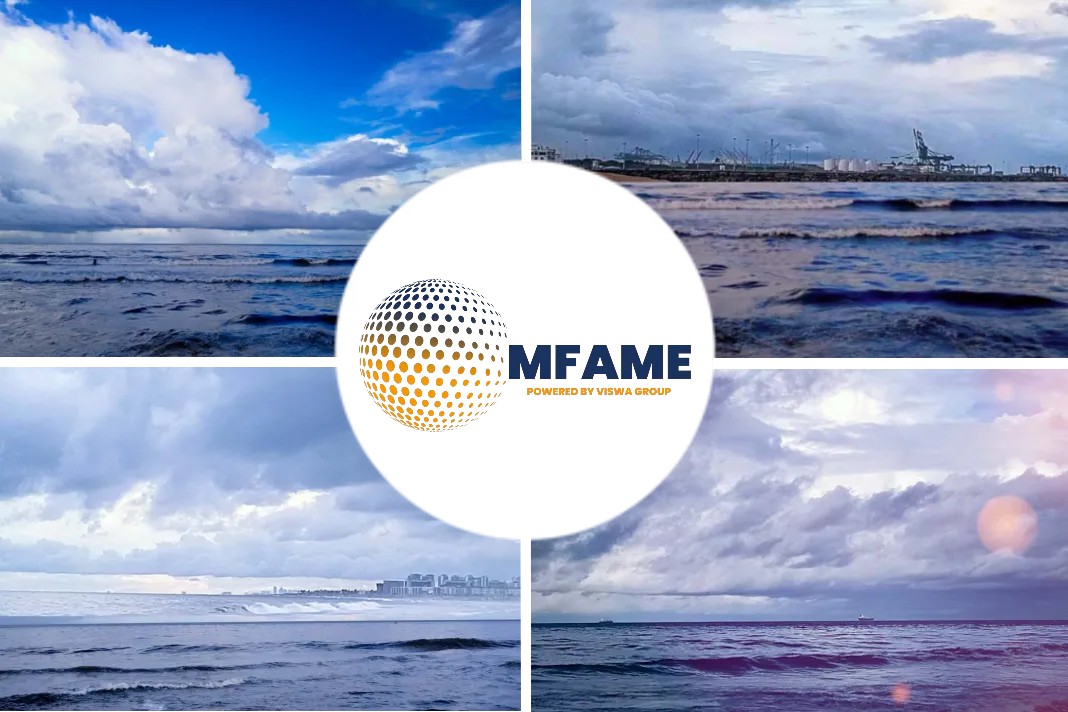Debate over whether or not scrubbers are a good thing for shipping and why some consider them not be their favoured solution for meeting the 2020 sulphur cap has been making headlines over recent weeks. ShipInsight spoke to Sigurd Jenssen, Director, Exhaust Gas Cleaning at Wärtsilä Marine Solutions (pictured above).
Maersk and Klaveness have both come out as against scrubbing technology but other owners have supported their use. Jenssen said that this is not surprising as there are several options for meeting the new rules when they take effect and there is no silver bullet or single approach that will suit everyone. He cites Finnlines, DFDS and many of the major cruise brands as supporters of scrubber technology all of which have been able to report savings in recent years because of being able to run on low cost fuels in ECAs.
Passenger vessel owners seem to have been the highest profile enthusiasts of scrubbing systems but Jenssen says that there is a very high level of interest by owners of other ship types which is not getting the same degree of attention.
In what may come as a surprise to many observers, Jenssen said, “Over the last six to nine months we have seen a very large increase in commitment and interest expressed by cargo ship operators, primarily in the newbuild sector where the cost of fitting a scrubber is comparatively cheaper”.
Most ships will be scrubber ready
Expanding on that point, Jenssen said that he had recently analysed the contracting on newbuildings in South Korea and in vessels that might be considered candidates for scrubbers, around 60% of this year’s orders were either being fitted with systems or were being built with a latter retrofit in mind. He also said that although there had not been such a detailed analysis of orders in China and Japan, he expected that the situation was probably similar.
Making a ship ‘scrubber ready’ is mostly concerned with ensuring that there is adequate sea chest capacity for the quantities of wash water that will be needed, installing some of the piping or at least determining layout and ensuring that there is sufficient space available for all components especially in the funnel area.
Jenssen suggested that the most likely reason why owners in many cases have gone to the trouble of readying a newbuilding for a scrubber but held back from fitting one immediately was one of finances. Since there are few savings to be had between now and 2020, owners may be holding on to their money to see how things pan out in 2020 and to take the final decision then.
The financial case for scrubbers has varied so much since the first was fitted because of the additional ECAs that have been established, the changing price of bunkers – particularly in the last few years – and now the expected but uncertain situation of fuel type and availability in and after 2020.
Jenssen refers to a previous study on this and says that the economic threshold is probably around consumption of at least 4,000 tonnes of fuel annually and an engine power of about 4-5MW. Below those figures, ships are probably unlikely to benefit from a scrubber unless there is a very big shift in fuel differentials.
Some of the previous cases for scrubbers found that ships which traded half of their time in an ECA and half outside were very marginal candidates for scrubbers. The effect of the global cap in 2020 will very likely change that thinking. Another change that is noticeable from earlier installations is that most systems are now designed to deal with all engines and boilers using HFO rather than just the main engine.
Finance flexibility is important
The position around fuel mix uncertainty in 2020 could be holding owners back from fitting scrubbers and Wartsila sees that most owners are looking for flexibility. To achieve this the larger owners may well be considering fitting some ships with scrubbers and for other vessels will be trying to hedge to secure compliant fuel at the lowest price. For smaller fleets the options are less clear cut and will depend upon finances available.
On the question of the cost of installing scrubbers, Jenssen cannot offer much comfort for shipowners. He says that the grants and subsidies that might once have been available when scrubbers were considered novel features will be harder if not impossible to obtain. On the other hand, some system makers could qualify for export credit guarantees that could permit some system makers to offer credit to some customers and there will be schemes that spread the cost with system makers taking some of the fuel cost savings until the system is paid for.
Jenssen does not believe that the reported attempts by some organisations to ban the use of non-compliant fuels as a way of ensuring a level playing field has much merit. He highlights the fact that as well as removing SOx from exhaust streams, a scrubber also removes much of the particulate matter which is currently not covered by regulation. However, he does feel that there does need to be means of ensuring that the rules are generally complied with.
Scrubbers are generally perceived solely as a means for meeting SOx regulations although as already mentioned, Jenssen also stresses their role in removing particulates. Some of the R&D effort that is being put into scrubbers is aimed not only at improving their performance but integrating them better with systems such as SCR for NOx removal. Although it may be some way down the line and not an immediate priority, future systems could serve as a complete abatement system for almost all exhaust pollutants.
Did you subscribe for our daily newsletter?
It’s Free! Click here to Subscribe!
Source: Ship Insight






















